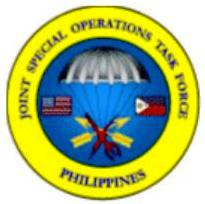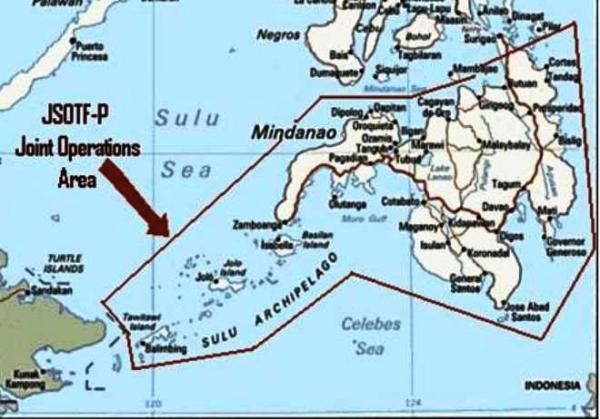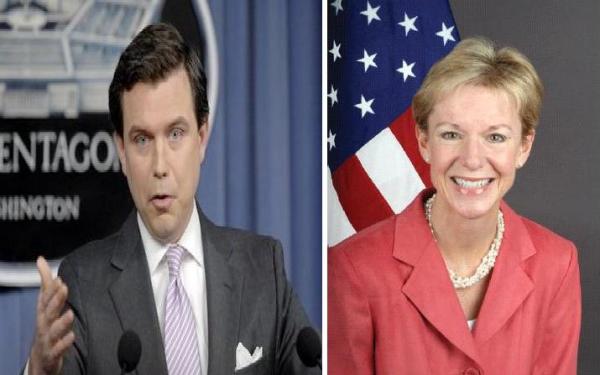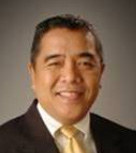The Philippines, America’s Hybrid War Strategy ‘Laboratory’ (2nd Update With Malacanang ‘Confirmation’)

This post is late.
It began germinating nearly three months ago when my Google news alert for terrorism stories first spoke about the Unites States shifting to what was termed a “hybrid war strategy” so it could adequately address national security concerns tangent to GWOT – the global war on terror.
http://www.nytimes.com/2009/06/23/world/americas/23military.html?_r=1
http://www.nytimes.com/2009/08/21/world/asia/21military.html?_r=2&src=twt&twt=nytimesworld
Then last June Mr. Robert Gates became the first US Secretary of Defence to visit Manila in ten years, followed by CIA Director Alan Panetta. That culminated with President Arroyo finally being invited for a whistle-stop hour-long meeting with President Barack Obama.
Now we have Sec. Gates disclosing that the elite 600-man ‘Joint Special Operations Task Force’ composed of Navy Seals, Marines, and Special Forces ‘military advisers’ will remain on extended duty.
Two statements stand out in the announcement of the extended mission of the elite US military special operations task force in the Philippines:
Geoff Morrell, the Pentagon press secretary:
Based on his briefings heading into Manila and his meetings on the ground there, Secretary Gates just felt this is not the right time to begin scaling back our support.
While we have made real progress against international terrorist groups there, everyone believes they would ramp back up their attacks if we were to draw down.
Ambassador Kristie A. Kenney:
Measuring the impact of the military mission there is difficult, but the task force’s efforts are multiplied by being closely coordinated with the Filipino government and American development assistance. This is not just a military counterinsurgency effort.
Further understanding can be gleaned from the web site of this American military unit which describes their mission thus:

The mission of the Joint Special Operations Task Force – Philippines (JSOTF-P) is to, at the request of the Philippine government, work alongside the AFP to defeat terrorists and create the conditions necessary for peace, stability, and prosperity in the Southern Philippines. The JSOTF-P consisted of between 500 and 600 personnel, including Army Special Operations Forces, Navy Seals, Air Force special operators, and a host of support personnel from all four U.S. military services. The Task Force was organized around a headquarters element, temporarily located at Camp Navarro, Zamboanga City, and 3 subordinate regional task forces. Camp Navarro is an Armed Forces of the Philippines facility. These Task Forces are: Task Force Archipelago, based at Camp Navarro, Zamboanga del Sur Province; Task Force Mindanao, based at Camp Siongco, Maguindanao Province; and Task Force Sulu, based at Camp Bautista, Jolo Island, Sulu Province. A handful of JSOTF-P personnel also worked in Manila to coordinate activities with the US Embassy Country Team and AFP General Headquarters.
So this ‘Delta Force’ in an official advisory/training mode actually operating from three strategically-located Philippine military bases with their force projection covering the entire Mindanao area as marked out here:

Now consider now these strategic security findings from papers of the Potomac Institute of Policy Studies, and the US Defense Tactical Information Center:
A New Strategic Concept: Hybrid War
The foregoing problem calls for a new strategic concept for use of U.S. military forces in
non-permissive environments in failing states. This new concept calls for greatly expanded roles and missions for our ground forces to support the political, informational and economic projections of national power, in addition to conventional military force, to achieve political objectives. As in the example of Nehemiah, future US ground forces will be required to execute stability and reconstruction operations and armed combat missions with equal facility. In other words, war of the next century will comprise a kind of hybrid5 war, projecting all elements of national power along a continuum of activities from stability, security, and reconstruction operations, to armed combat.More specifically this hybrid war paradigm requires a new approach to using our armed forces for a broader and more comprehensive war of scale, ranging from purely peaceful humanitarian missions as preventive measures, to the development of hostile conditions, through traditional warfighting operations employing traditional combat strategies, to post conflict reconstruction and stabilization efforts, where security and peace derive from thriving economic and political status.
Hybrid war envisions employment of a comprehensive and highly-nuanced variety of military activities, resources, programs, and applications, tailored to maximize a non-violent, persuasive use of economic and political influence to reform hostile governments, movements, or trends in politically, socially, and economically unstable conditions, characteristic of failing and failed states. It also includes a full range of military intelligence capabilities, non-conventional (including non-lethal) weapons, armaments, support units, and combat equipment, available for instant employment if ever opposition elements of regular forces or irregular insurgents, terrorists, or other non-state actors cross the hostility threshold and constitute a direct threat to or threaten these non-hostile activities.
Defining the Threat in Failing States
Identifying the characteristics of failed and failing states is necessary for understanding why the new hybrid war paradigm must embrace stabilization operations in these states.
Foreign Policy Magazine and the Fund for Peace maintain an Index of Failing States, using socioeconomic and political criteria.
For the purposes of this index, a failing state is one in which the government does not have effective control of its territory, is not perceived as legitimate by a significant portion of its population, does not provide domestic security or basic public services to its citizens, and lacks a monopoly on the use of force. Other aspects of failing states are an economy in decline (GDP/capita less in real terms than in earlier years), very high levels of government and business corruption, large “informal” (underground) economic sectors and low levels of trade with developed states, except for commodity exports. Public provision of education, health care, sanitation, and a predictable, objective justice system all seem underprovided in failing states.
Failing states are also characterized by large areas within their borders of ungoverned or undergoverned space. Frequently these areas are totally beyond control of the central government of a state, and whatever social services or security are provided come fromdissident groups, warlords and criminal gangs. These areas are fertile ground for terrorist groups of global reach to establish bases, recruit fighters and suicide bombers, raising funds through illegal activity such as drug trade, counterfeiting, and so forth. In short, ungoverned space in any state represents a potential threat to U.S. national security interests.
Further, ungoverned space engenders non-terrorist threats to the world economic system by facilitating drug smuggling, human trafficking, pandemic disease, counterfeiting and copyright violations, and piracy. Thus, such spaces and the evils they harbor are common enemies of mankind and of Western globalization and need to be reduced or eliminated.
By definition, the central governments of the states hosting these spaces are incapable of removing them, i.e., restoring full governmental services, security, and infrastructure to support economic progress. Even large inflows of aid to such regions from international and private volunteer organizations, are likely to be ineffective, due to corruption and lack of security.
Examples include: Palestine in 2006, Somalia in1993, and Kosovo in 1999. Therefore, in order to realize physical, economic, and social security and stability in such a region and prevent development or establishment of a terrorist threat, a combination of armed force to provide security and foreign assistance in the form of humanitarian aid and infrastructure construction must be coordinated.
Identifying trends and precursors to states ‘at risk’ for terrorist infiltration, will require strategic thinkers to focus on nations within the “non-integrated gap” described by Thomas P.M. Barnett in The Pentagon’s New Map,10 roughly “developing” states within what was formerly called the “Third World”. Many states within the non- integrated gap have ungoverned, or under-governed, areas within their borders in which terrorist groups with global reach can flourish.
These states are not unique to a particular region: Colombia and Tri-Border Region in the area of responsibility of Southern Command contain under-governed spaces, as do a number of states in the Middle East. Of direct concern for future stability and reconstruction operations, however, are nations on the continent of Africa, especially those below the Sahara.
Such states are involved in a clear struggle for control between Muslim extremist groups and more Western oriented Christian and animist groups. The characteristics and peculiarities of weak or failing states constitute hotspots of the world that present the most pressing requirement for development of the paradigm of hybrid war to meet national security objectives. US national security objectives for this paradigm require not only early detection of weakening governance, but also development of effective strategies for intervention.
An intervention, if undertaken, needs to stabilize democratic indigenous government institutions, strengthen the national economy and enhance the rule of law in order to staunch the spread of anti-western terrorist organizations in this state. This type of intervention is necessarily a long-term commitment of US power to a particular state. Short-term “peacekeeping” SSTR operations do not produce the desired effects on a permanent basis.
Evolution of Stability and Security Operations
The United States military has had much recent experience in conducting stabilization and reconstruction operations in failed and failing states, from the Balkans and Haiti in the early 1990s, through Afghanistan and Iraq today. What has emerged from over five years of the Global War on Terrorism and four years of war in Iraq is the realization that stability operations, to succeed, are long-term US commitments requiring large amounts of human and financial capital. Developing comprehensive plans to project all the elements of US national power into successful stabilization of a region requires a robust variety of skills and experience.
http://www.potomacinstitute.org/publications/Potomac_HybridWar_0108.pdf
http://www.dtic.mil/cgi-bin/GetTRDoc?AD=ADA468398&Location=U2&doc=GetTRDoc.pdf
This writer cannot avoid connecting the dots between the description for failing or failed states and the diplomatically crafted statements by the officials herein quoted and the domestic situation we Filipinos know it to be.
The Philippines is, de facto, one of the United States’ real-life laboratories for its Hybrid War Strategy for the Global War On Terror.
The only parties I can imagine will not agree to this conclusion are temporarily staying in the Palace by the Pasig.
1st UPDATE:
The U.S. publication Foreign Policy Magazine On-Line Edition recently released its ‘Failed States’ Index for 2009.


The Philippines and Cambodia are the only Southeast Asian countries with dismal ratings and are tagged as being “at risk of failing,” with even Cambodia four rungs higher than the Philippines.
The Philippines has a score of 85.8 while Cambodia has 87.3
China is ranked at 57th spot with an 84.6 mark.
The 2009 Failed State Index was produced through a collaboration between the Fund for Peace, an independent research organisation, and Foreign Policy magazine.
The index is based on a set of indicators, including demographic pressures, number of refugees and internally displaced persons, human flight, group grievances, uneven development, economic decline and delegitimization of the state.
http://www.foreignpolicy.com/articles/2009/06/22/the_2009_failed_states_index
This, to me, is thoroughly depressing as it points to the undeniable challenge to both the outgoing Arroyo regime, and the politicians jockeying to succeed her next year.
I wonder who among the 15 individuals dreaming of becoming the country 15th President is a Moses who can lead us out of our Egypt.
Just minutes back in a post on Facebook, Ed Malay listed his running tally of the wannabees:
A certain Dr. Felix Cabrera Cantal is also running for President in 2010. Dr. Cantal worked for the UN for 16 years and will banner the Philippine Green Republican Party.
Now we have 15 candidates for the presidency:
Vice Pres. Noli de Castro, Chief …Justice Reynato Puno, Former Pres. Erap Estrada, Senators Mar Roxas, Manny Villar, Chiz Escudero, Loren Legarda, Richard Gordon, Sec. Gilbert Teodoro, MMDA Chairman Bayani Fernando, Makati Mayor Jejomar Binay, Gov. Among Ed Panlilio, Bro. Eddie Villanueva, Bro. Mike Velarde.
I loop off this updated post wondering who among these people really are serious in thinking about what they can offer Filipinos, and who are in the race “just for the FUND of it or who will really just slide down after being ‘incentivized’ not to spoi the borth, in a manner of speaking, and just settle for a run at the Senate, or even the promise of cushy jon in the next government.
Just you watch.
2nd Update:
Now comes this admission
Presidential economic spokesman Gary Olivar:
The threat posed by Islamic extremism is no longer confined to the Philippines but is now a serious global security problem.
If before, the situation in Mindanao was a local problem, now it is part of the fundamentalist movement in the Middle East. There is now the al-Qaeda and it has already established links with our local Muslim rebels so it cannot be avoided that we are now part of the global war against this kind of fundamentalist terrorism. We now have a role to play as a member of the global war (against terror).
http://www.philstar.com/Article.aspx?articleId=498832&publicationSubCategoryId=63
On the side of the U.S. further insight can be gleaned here:
Scot Marciel, Deputy Assistant Secretary for East Asian and Pacific Affairs and US Ambassador to ASEAN (Speaking before the Center for Strategic International Studies in Singapore):
Recent developments have highlighted the difficulty and importance of achieving a lasting peace in Mindanao.
We are not serving as intermediaries or getting into details. That’s for the Philippines to do, but we are doing what we can to encourage both sides to reach an agreement that can make a big difference for the future of the country.
The ASEAN region is of crucial importance to the United States. The US has two primary interests in the region – for Southeast Asian nations to remain strong, stable, free and prosperous; and for them to remain “good partners” in regional and global issues ranging from addressing climate change to containing the threat of weapons of mass destruction (WMD).
http://www.abs-cbnnews.com/nation/10/02/08/mindanao-focus-us-southeast-asia-peace-and-stability





I’m reaching an additional conclusion: that the U.S. views the Philippines as a “failed or failing state.”
Yes, Nick, connecting the dots bring us there…
A Laboratory for American hybrid war strategy? We would be SO lucky! But it is a bit of a stretch to say that the Philippines is a failed or a failing state. Or if it is, it would not be news. When Barack comes to Asia we shall see the true focus of American strategy: INDONESIA!
I am wondering Manong if you took time to go through the documents I linked to.